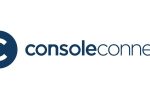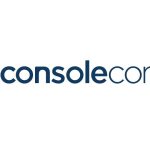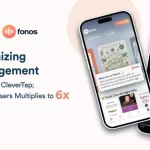By: David Sentongo, Product Strategy Leader at Kofax
In an age of “click and get it done,” customers are conditioned to expect business interactions to be simple, speedy and convenient. Applying for a credit card, for example, should be as seamless as snapping and sharing a photo from a smartphone. But if a business asks you to send documents by fax, email or mail/post? That’s very frustrating. Proving identity shouldn’t be so tedious.
These moments of customer interaction and engagement are crucial, and yet it’s in these moments that potholes often lurk. Unnecessarily cumbersome, slow and inefficient interactions threaten to exasperate the consumer or even disable the entire journey.
The key to avoiding these potholes is to strengthen customer relationships and rethink customer journeys with an eye toward simplifying information-rich interactions. Using intelligent automation to to guide customer engagement can help avoid those potholes and accelerate the journey to a positive outcome for everyone involved.
Pothole #1: Where Time Is Wasted
No one likes unnecessary extra work—or has the time for it. So, it’s understandable that customers hit the brakes when asked to re-enter information. Consider, for example, the journey of a customer who needs to submit an insurance claim. They haven’t traveled far into the process before they hit a pothole: a lengthy form asking for personal details—most of which they know their insurance firm already has.
With much of the information needed to complete the claim in their files, insurance companies can use intelligent automation to pre-populate the form. In doing so, they save the customer time and create a better customer experience.
Pothole #2: Where Revenue Vanishes
Every business wants new customers and the revenue that comes with them. So, allowing prospective customers to fall into a pothole when they attempt to open a new account is just crazy—intelligent automation can avoid those potholes and help make that revenue materialize. A common problem is that application forms are too long, and businesses fail to recognize the opportunity to automate. A recent report shows customers aren’t going to stick around for a process that feels too long. Abandonment rates affect up to 40% of account openings when the process takes more than 10 minutes online and more than 5 minutes on a mobile device.
According to Thomson Reuters, 89% of clients go through an onboarding that creates friction and frustration, and as a result, 13% choose to switch for a competitor. These numbers might sound shocking, but research and evidence show that most companies lose clients before acquiring them. Simplifying this process for customers reduces the risk they’ll quit midway through.
With intelligent automation, businesses are more likely to keep new revenue. The Kofax 2022 Intelligent Automation Benchmark Study shows that 94% of the executives surveyed cited optimizing customer acquisition and retention as a key motivator for implementing end-to-end workflow automation.
Pothole 3 – Where Silence Is Not Golden
The current labor market is tight, and companies are fiercely competing for talent. You may not give the employee onboarding process much thought—after all, the candidate may have accepted the job already—but often a great employee onboarding journey is needlessly hampered by potholes. A recent study by the Human Capital Institute shows most employers are missing an important opportunity to capitalize on the energy and enthusiasm new hires bring to their organizations through effective onboarding. In fact, nearly a quarter of organizations surveyed said they have no onboarding strategy or process at all.
Starting a new job is exciting. The employee wants to have a clear understanding of what they need to do, and the organization needs to coordinate all the cross-functional people and systems that will get that new employee onboard smoothly. Silence from the company worries prospective new employees—did they make the right choice? Many times, that silence can be a result of delays and inefficiencies caused by manual processes. The Kofax benchmark study indicates that 24% of organizations use manual onboarding processes and 31% use partially manual processes.
Great onboarding means keeping that employee informed, while filling out paperwork, gaining access to relevant systems and resources, and perhaps scheduling and completing induction and training. Intelligent automation handles these tasks even before the new hire steps foot in the office. HR staff and hiring managers then have more time to engage personally with the recruit and ensure they feel like a valued member of the team. In tight labor market or high-volume hiring environments, this approach makes it less likely new hires will jump to competitors.
A Smoother Journey with Intelligent Automation
When customers and employees get stuck in potholes, companies risk losing them, their goodwill and the revenue and other value they bring. But companies that work like tomorrow know that leveraging people, processes and the right intelligent automation technology is what’s needed to fill the potholes in onboarding processes. Turning information-intensive interactions into great moments of engagement creates a great experience and an efficient journey—and sets the organization apart from its competition.




















